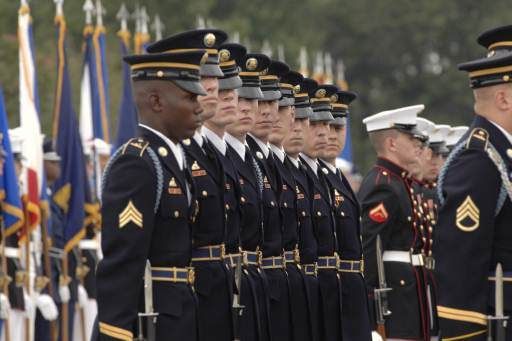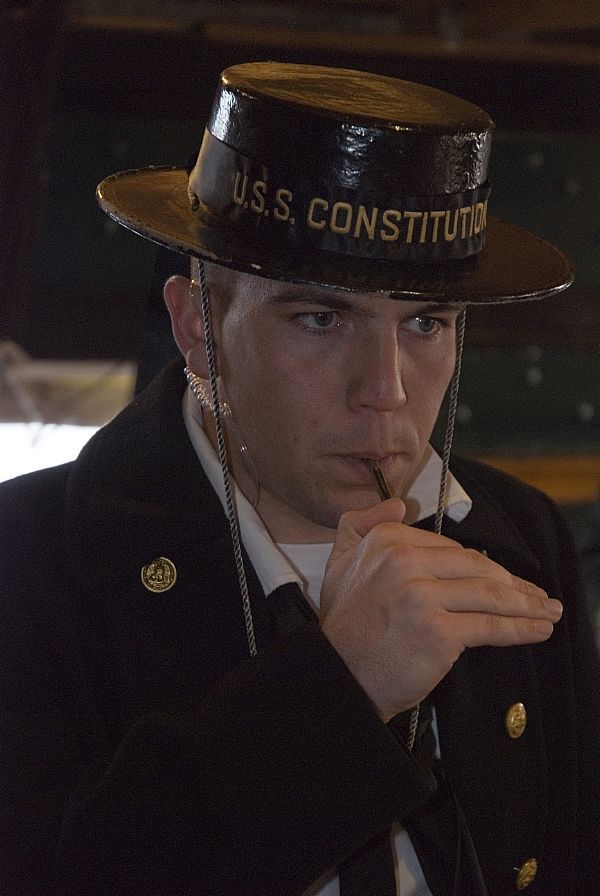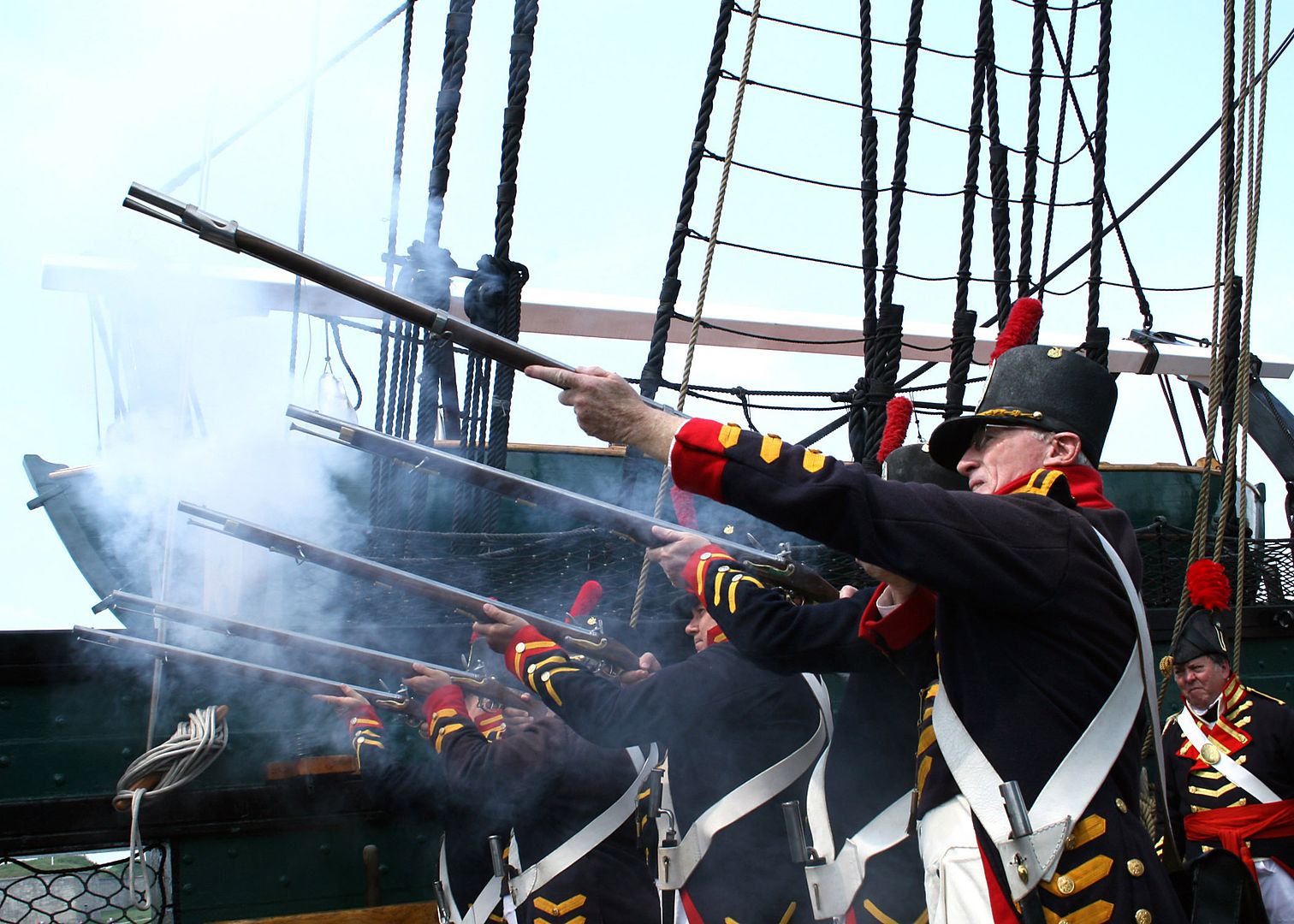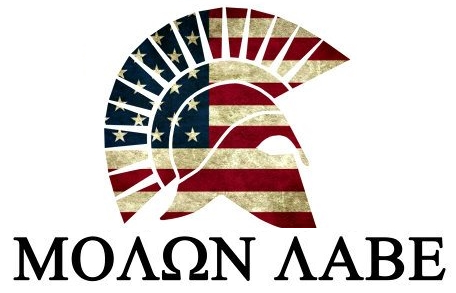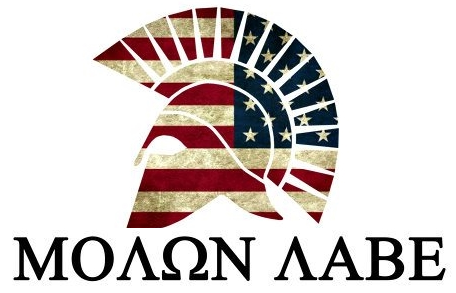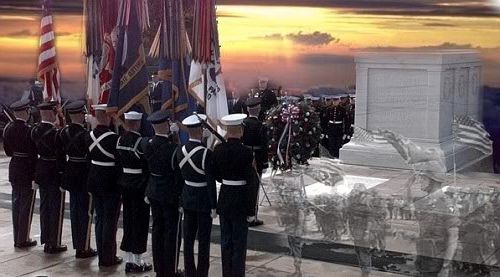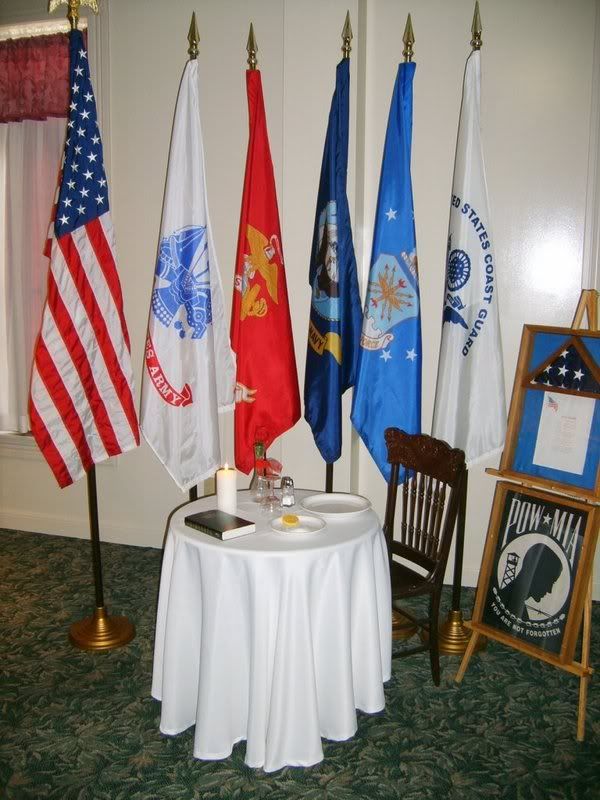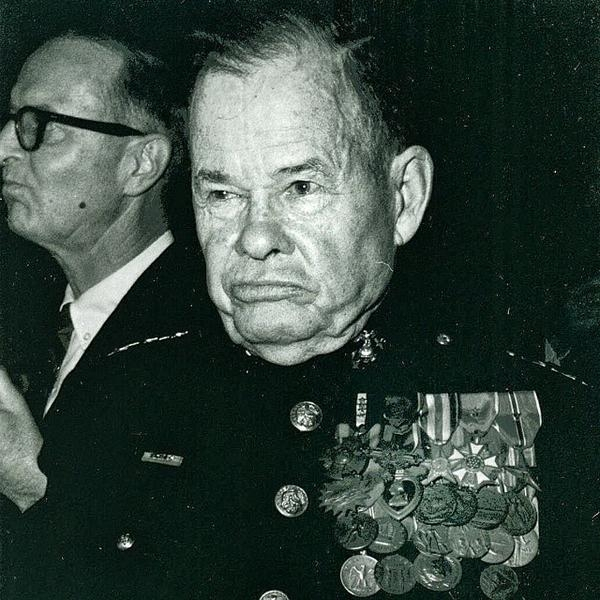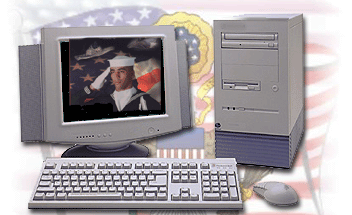~ Hall of Heroes ~ Lewis Burwell "Chesty" Puller Info from here. |
|
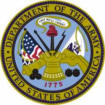  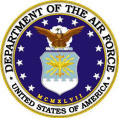 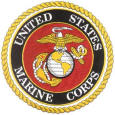  |
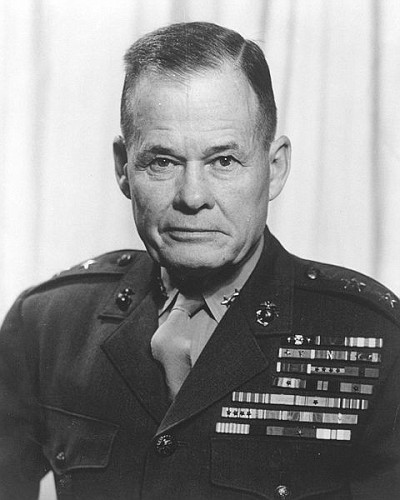 Lieutenant General Lewis Burwell "Chesty" Puller (June 26, 1898 – October 11, 1971) was an officer in the United States Marine Corps. Puller is the most decorated U.S. Marine in history, and the only Marine to receive five Navy Crosses. Lieutenant General Lewis Burwell "Chesty" Puller (June 26, 1898 – October 11, 1971) was an officer in the United States Marine Corps. Puller is the most decorated U.S. Marine in history, and the only Marine to receive five Navy Crosses. During his career, he fought guerrillas in Haiti and Nicaragua, and participated in some of the bloodiest battles of World War II and the Korean War. Puller retired from the Marine Corps in 1955, spending the rest of his life in Virginia. |
| Puller was born in West Point, Virginia to Matthew and Martha Puller. His father was a grocer who died when Lewis was 10 years old, leaving him the head of the house. Puller grew up listening to old veterans' tales of the Civil War and idolizing Thomas "Stonewall" Jackson. He wanted to enlist in the army to fight in Mexico in 1916, but he was too young and could not get parental consent from his mother. The following year, Puller attended the Virginia Military Institute but left at the end of his first year as World War I was still ongoing, saying that he wanted  to "go where the guns are". Inspired by the 5th Marines at Belleau Wood, he enlisted in the United States Marine Corps as a private and attended boot camp at the Marine Corps Recruit Depot, Parris Island, South Carolina. to "go where the guns are". Inspired by the 5th Marines at Belleau Wood, he enlisted in the United States Marine Corps as a private and attended boot camp at the Marine Corps Recruit Depot, Parris Island, South Carolina. Although he never saw action in that war, the Corps was expanding, and soon after graduating he attended NCO school and OCS (Officer Candidates School) at Quantico, Virginia following that. Upon graduation from OCS on June 16, 1919, Puller was appointed to the grade of second lieutenant in the reserves, but reduction in force following the war led to his being put on inactive status 10 days later and given the rank of corporal. As a corporal, Puller received orders to serve in the Gendarmerie d'Haiti as a lieutenant, seeing action in Haiti. While the United States was working under a treaty with Haiti, he participated in over forty engagements during the ensuing five years against the Caco rebels and attempted to regain his commission as an officer twice. In 1922, he served as an adjutant to General Alexander Vandegrift, a future Commandant of the Marine Corps. On March 6, 1924, Puller returned stateside and was finally recommissioned as a second lieutenant (service number 03158), afterward completing assignments at the Marine Barracks in Norfolk, Virginia, The Basic School in Quantico, Virginia, and with the 10th Marine Artillery Regiment in Quantico, Virginia. He was assigned to the Marine Barracks at Pearl Harbor, Hawaii in July 1926 and in San Diego, California in 1928. In December 1928, Puller was assigned to the Nicaraguan National Guard detachment, where he earned his first Navy Cross for his actions from February 16 to August 19, 1930 when he led "five successive engagements against superior numbers of armed bandit forces. He returned stateside in July 1931 and completed the year-long Company Officers Course at Fort Benning, Georgia, thereafter returning to Nicaragua from September 20 to October 1, 1932 to earn a second Navy Cross. After his service in Nicaragua, Puller was assigned to the Marine detachment at the American Legation in Beijing, China commanding a unit of China Marines. He then went on to serve aboard USS Augusta (CA-31), a cruiser in the Asiatic Fleet, which was commanded by then-Captain Chester W. Nimitz. Puller returned to the States in June 1936 as an instructor at the Basic School in Philadelphia. In May 1939, he returned to the Augusta as commander of the onboard Marine detachment, and then back to China, disembarking in Shanghai in May 1940 to serve as the executive officer of 2nd Battalion, 4th Marines. He later served as its commanding officer. |
Major Puller returned to the U.S. on August 28, 1941. After a short leave, he was given command of 1st Battalion, 7th Marines (known as 1/7) of the 1st Marine Division, stationed at New River, North Carolina, the new Marine amphibious base which would soon be renamed for the 13th Commandant of the Marine Corps, John A. Lejeune, MCB Camp Lejeune, North Carolina. Early in the Pacific theater the 7th Marines formed the nucleus of the newly created 3rd Marine Brigade and arrived to defend Samoa on May 8, 1942. Later they were redeployed from the brigade and on September 4, 1942, they left Samoa and 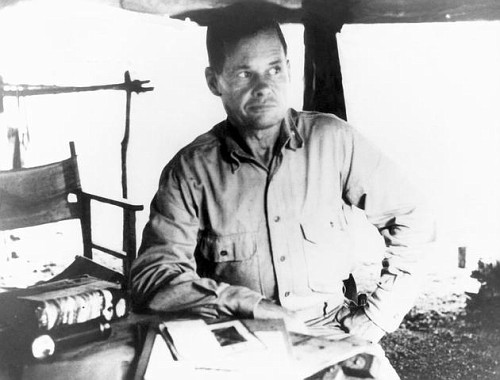 rejoined the 1st Division at Guadalcanal on September 18, 1942. rejoined the 1st Division at Guadalcanal on September 18, 1942. Soon after arriving on Guadalcanal, Puller led his battalion in a fierce action along the Matanikau, in which Puller's quick thinking saved three of his companies from annihilation. In the action, these companies were surrounded and cut off by a larger Japanese force. Puller ran to the shore, signaled a United States Navy destroyer, the USS Monssen, and then directed the destroyer to provide fire support while landing craft rescued his Marines from their precarious position, actions that earned him a Bronze Star. Later on Guadalcanal, Puller earned his third Navy Cross, in what was later known as the "Battle for Henderson Field", in which the 1/7 battalion was the only American unit defending the airfield against a regiment-strength Japanese force. In a firefight on the night of October 24–25, 1942, lasting about three hours, 1/7 sustained 70 casualties; the Japanese force suffered over 1,400 killed in action, and the battalion held the airfield. While on Guadalcanal, Puller was shot by a sniper twice and wounded by shrapnel in three different places, for which he was awarded the Purple Heart. When the Japanese put another offensive across the Matanikau river, the Japanese force was much stronger, and Puller didn't have enough men. But one man, Staff Sergeant John Basilone saved the entire Regiment with his Machine Gun, and running back and forth bringing much needed Ammunition to his Battalion. While on leave on Melbourne, Puller put Basilone for a Medal of Honor, which was approved by the President himself. Puller was then made executive officer of the 7th Marine Regiment. While serving in this capacity at Cape Gloucester, Puller earned his fourth Navy Cross for overall performance of duty between December 26, 1943 and January 19, 1944. During this time, when the battalion commanders of 3rd Battalion, 7th Marines and, later, 3rd Battalion, 5th Marines, while under heavy machine gun and mortar fire, he expertly reorganized the battalion and led the successful attack against heavily fortified Japanese defensive positions. He was promoted to colonel effective February 1, 1944, and by the end of the month had been named commander of the 1st Marine Regiment. Colonel Puller would lead the 1st Marines into the protracted battle on Peleliu, one of the bloodiest battles in Marine Corps history during September and October 1944, action where he earned his first Legion of Merit. During the summer of 1944, Puller's younger brother, Samuel D. Puller, the Executive Officer of the 4th Marine Regiment, was killed by a sniper on Guam. Puller returned to the United States in November 1944, was named executive officer of the Infantry Training Regiment at Camp Lejeune and, two weeks later, Commanding Officer. After the war, he was made Director of the 8th Reserve District at New Orleans, and later commanded the Marine Barracks at Pearl Harbor. |
At the outbreak of the Korean War, was once again assigned as commander of 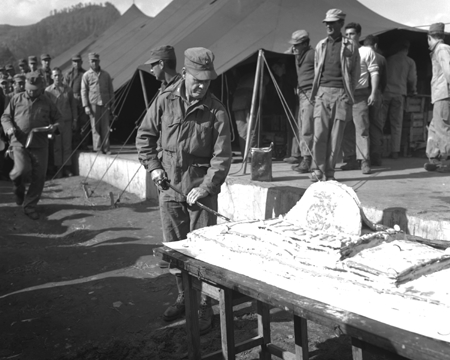 the 1st Marine Regiment, with which he made a landing at Inchon on September 15, 1950, earning his Silver Star. For leadership from September 15 to November 2, he was awarded his second Legion of Merit. He was awarded the Distinguished Service Cross from the Army for action from November 29 to December 5 of that same year, and his fifth Navy Cross for action during December 5–10 at the Battle of Chosin Reservoir. It was during that battle when he made the famous quote, "We've been looking for the enemy for some time now. We've finally found him. We're surrounded. That simplifies things." the 1st Marine Regiment, with which he made a landing at Inchon on September 15, 1950, earning his Silver Star. For leadership from September 15 to November 2, he was awarded his second Legion of Merit. He was awarded the Distinguished Service Cross from the Army for action from November 29 to December 5 of that same year, and his fifth Navy Cross for action during December 5–10 at the Battle of Chosin Reservoir. It was during that battle when he made the famous quote, "We've been looking for the enemy for some time now. We've finally found him. We're surrounded. That simplifies things."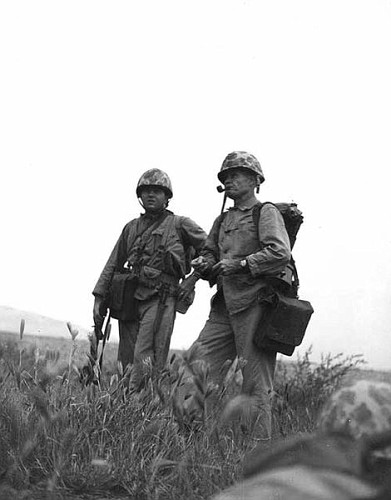 In January 1951, Puller was promoted to brigadier general and was assigned duty as assistant division commander (ADC) of the 1st Marine Division. On February 24, however, his immediate superior, Major General O. P. Smith, was hastily transferred to command X Corps when its army commander, Major General Bryant Moore, died. Smith’s temporary transfer left Puller in command of his beloved 1st Marine Division. Puller would serve as ADC until he completed his tour of duty and returned to the United States on May 20, 1951.[citation needed] Colonel Puller studies the terrain during the Korean War. General Puller subsequently received promotions to major general and lieutenant general, and served in various command capacities until his retirement due to health reasons on November 1, 1955. Puller's son Lewis Burwell Puller, Jr. (generally known as Lewis Puller) became a highly decorated Marine as a lieutenant in Vietnam. While serving with 2nd Battalion, 1st Marines Lewis Jr. was severely wounded by a mine explosion, losing both legs and parts of his hands. General Puller broke down sobbing at seeing his son for the first time in the hospital. Puller was father-in-law to Colonel William H. Dabney, a VMI graduate, who, as a captain, was the commanding officer of two heavily reinforced rifle companies of the Third Battalion, Twenty-Sixth Marines from January 21 to April 14, 1968. During the entire period, Colonel Dabney's force stubbornly defended Hill 881S, a regional outpost vital to the defense of the Khe Sanh Combat Base during the 77-day siege. Following Khe Sanh, Dabney was nominated for the Navy Cross for his actions on Hill 881 South. But his battalion executive officer's helicopter carrying the nomination papers crashed—and the papers were lost. On April 15, 2005 Colonel William H. Dabney, USMC (Ret) was awarded the Navy Cross in a ceremony at Virginia Military Institute for actions 37 years earlier in Vietnam. Puller was a distant cousin to another famous hard-charging and decorated general with roots in rural Virginia, Army General George S. Patton. |
| Puller was the most decorated U.S. Marine in history, receiving the Navy Cross, the Navy's and Marines' second highest decoration, five times (the second and only other person to be so honored, after Navy submarine commander Roy Milton Davenport). With five Navy Crosses and a Distinguished Service Cross, the Army's second highest decoration, Puller received the nation's second highest military decoration a total of six times. 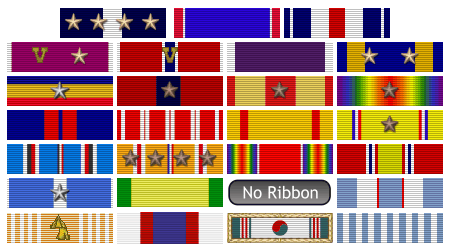
Famous quotes:
- "All right, they're on our left, they're on our right, they're in front of us, they're behind us...they can't get away this time."
- "Great. Now we can shoot at those bastards from every direction."
- "We’re surrounded. That simplifies our problem of getting to these people and killing them." — November 1950, during Chosin Reservoir campaign
- "Remember, you are the 1st Marines! Not all the Communists in Hell can overrun you!" (at the Chosin Reservoir)
- "Take me to the Brig. I want to see the real Marines."
- "Alright you bastards, try and shoot me!" (to Korean forces)
- "Where do you put the bayonet?" (upon seeing a flamethrower for the first time)
- "You don't hurt 'em if you don't hit 'em."
|
| Please remember the Canteen is here to honor, support and entertain our troops and their families. This is a politics-free zone! Thanks for helping us in our mission! |
|

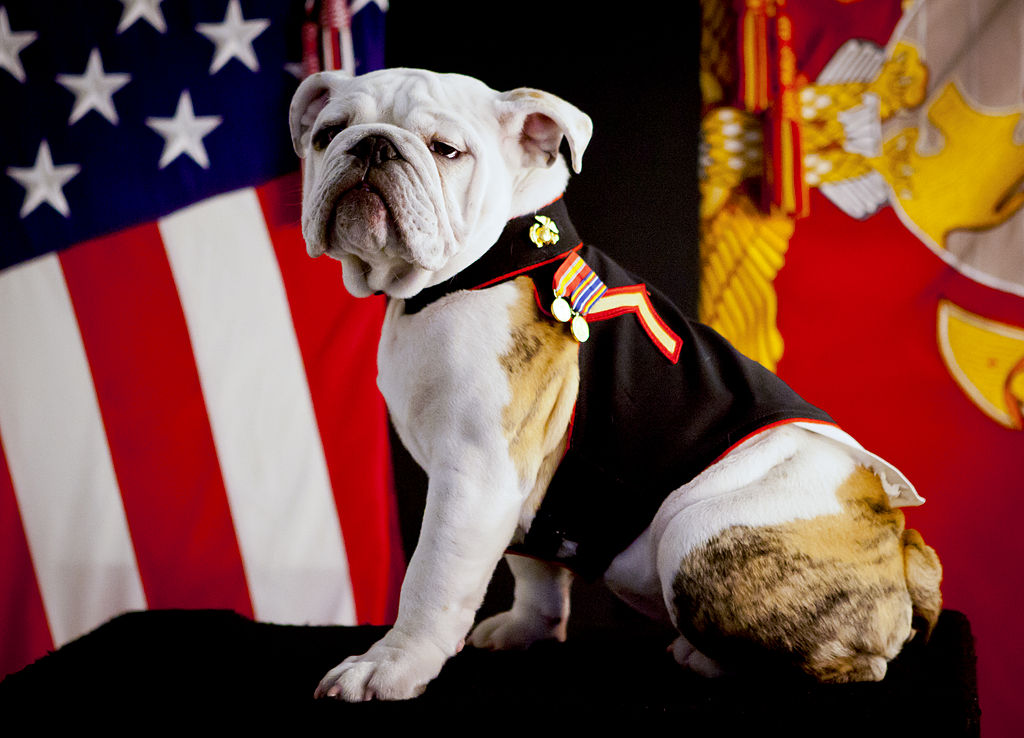





 Lieutenant General Lewis Burwell "Chesty" Puller (June 26, 1898 – October 11, 1971) was an officer in the United States Marine Corps. Puller is the most decorated U.S. Marine in history, and the only Marine to receive five Navy Crosses.
Lieutenant General Lewis Burwell "Chesty" Puller (June 26, 1898 – October 11, 1971) was an officer in the United States Marine Corps. Puller is the most decorated U.S. Marine in history, and the only Marine to receive five Navy Crosses.  to "go where the guns are". Inspired by the 5th Marines at Belleau Wood, he enlisted in the United States Marine Corps as a private and attended boot camp at the Marine Corps Recruit Depot, Parris Island, South Carolina.
to "go where the guns are". Inspired by the 5th Marines at Belleau Wood, he enlisted in the United States Marine Corps as a private and attended boot camp at the Marine Corps Recruit Depot, Parris Island, South Carolina.  rejoined the 1st Division at Guadalcanal on September 18, 1942.
rejoined the 1st Division at Guadalcanal on September 18, 1942.  the 1st Marine Regiment, with which he made a landing at Inchon on September 15, 1950, earning his Silver Star. For leadership from September 15 to November 2, he was awarded his second Legion of Merit. He was awarded the Distinguished Service Cross from the Army for action from November 29 to December 5 of that same year, and his fifth Navy Cross for action during December 5–10 at the Battle of Chosin Reservoir. It was during that battle when he made the famous quote, "We've been looking for the enemy for some time now. We've finally found him. We're surrounded. That simplifies things."
the 1st Marine Regiment, with which he made a landing at Inchon on September 15, 1950, earning his Silver Star. For leadership from September 15 to November 2, he was awarded his second Legion of Merit. He was awarded the Distinguished Service Cross from the Army for action from November 29 to December 5 of that same year, and his fifth Navy Cross for action during December 5–10 at the Battle of Chosin Reservoir. It was during that battle when he made the famous quote, "We've been looking for the enemy for some time now. We've finally found him. We're surrounded. That simplifies things."



